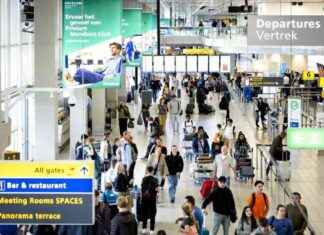the Trend is clear. A new report from the national council for Crime prevention (Brå) argue that the number of notified klotterbrott against public transport has increased by almost 40 per cent, the equivalent of over 10 000 more reported crimes, in 2018. Klottret has gone from isolated incidents to become the whole society’s problems. Each year, the destruction of the common property of hundreds of millions.
Storstockholms lokaltrafik (SL) constitutes, unfortunately, no exception. Just from the year before, klotterytan doubled in the main and in the whole of the SL-traffic increased by over 30%. This represents an increase of 44,000 square meters of renovated surface in the traffic between 2017 and 2018 – at an annual cost of sek 120 million.
In 2018, was made over 61.000 polisanmälningar of SL regarding the vandalism, which, in principle, all were linked to the graffiti. Only around a half per cent of the cases resulted in any arrest. We see in convictions, the proportion was even less. Thus, it is extremely rare that the perpetrators have to take the consequences of their actions. If this witness kollektivtrafikmyndigheter around the country.
Vandalism is not art, to the systematic vandalize trains, buses and stations are not innocent prank. It is affront to our common terms and our common ownership.
the Development is unsustainable. The extensive property damage must be combated vigorously, regardless of whether the förkläs in the concept art, meaningless ”tags” or provocative graffiti. Vandalism is not art, to the systematic vandalize trains, buses and stations are not innocent prank. It is affront to our common terms and our common ownership.
For many in the day for easy on-thats what impact on society. An example of this is the state of the Swedish film institute, which rented out the premises to show how the subway cars klottras down. In this way, to nurture destructive subcultures is harmful and the risk of its extension to have an impact greater than the material and economic. A study from the national Board of health has shown a clear connection between graffiti and other social problems. Students who start doodling in grade 8 used more often to drugs, committed to a greater extent other criminal acts and had worse skolanpassning in grade 9 than those who have not started doodling.
‘ve jotted down the surfaces should be pressed back with the quick clean-up and a mandatory polisanmälning. We will also review our work with antiklottermaterial within the SL network. Everything to make it as difficult as possible for vandals and do what we can to get away klottret when it occurs. Within 24 hours, we believe that the graffiti on the SL’s property, shall be fixed and cleaned up.
Next year we are investing a half billion dollars to basically double the number of security guards and develop egendomsbevakningen, even more and better cctv cameras to be introduced. Together with public transport operators, we shall visit the schools and by special information campaigns to get young people to refrain from graffiti. To it, we adjust up our security work, in general, with a targeted budgetary effort, which means that it now annually amounts to over a quarter of a billion kronor.
But we can’t do everything. It requires a wide collection of all the players that are building our country against those who are destroying it. Therefore, we are now joint actions of the trader, the municipalities and the government to fight back against klottervågen. We see here four priority areas:
1 the Face of zero tolerance and the 24-hour rule in the whole country. IN the SL traffic is a zero tolerance policy against all forms of graffiti and vandalism. At the same time there are municipalities that either want to see or address the problems. Many lay the blame on ownership or physical boundaries. Even the government’s authority, the Swedish transport administration has long failed to klottersanera both the road and järnvägsanläggningar. It requires common rules and actions to clearly show that the society stands up against the klottret. The 24-timmarsregel available in the SL-traffic should be made the norm for government agencies, transport authorities, municipalities and property owners throughout the country.
2 Reinforce the protection for properties and vehicles. today, The shortcomings of the legislation in the ability to provide klotterutsatta environments such as public transport depots the right protection. It would be relatively easy to fix by upgrading these properties to protected. Similarly, the legislation around the camera monitoring change so that it becomes possible to set up cameras at the crime and klotterutsatta areas stationsentréer and busstorg. The law should also be tightened up to give the guardian the opportunity to fine doodlers and arrest on suspicion.
3 Equip judicial action against the doodlers. That there are no regular resources available to intervene against, investigate, or prosecute doodlers is a failure of the justice system. The judicial part of society have to stop to dismantle and devalue the efforts against graffiti and vandalism. It is time to re-introduce police special graffiti – and skadegörelsegrupp, as well as the specialized klotteråklagarna. The special police in public transport and the metro need to be restored.
4 , Complicate the availability of klotterverktyg. We need to seek ways to cut off the supply of spray cans, which are almost exclusively used in the illicit klotterverksamhet. It is possible to regulate the fireworks on new year’s eve and the sale of energy drinks, one can reasonably also regulate access to the color for the vandals. To impose regulations on where and how the spray cans are to be sold and impose an age limit should not be controversial.
the Step from a nedklottrad underpass or station to gangs, robbery and drug trafficking are, unfortunately, too short.
It is high time to pull together in order to fight back against the forces that create insecurity by destroying and förslumma our common environments.
Lessons from how New York city during the 1980-90-the numbers speak a clear language. First, with a clear zero-tolerance approach to what we carelessly call mängdbrott, it was possible to reverse the trend, including the fight against klottret and vandalism played a crucial role. Sweden has everything to gain by following the experience.








